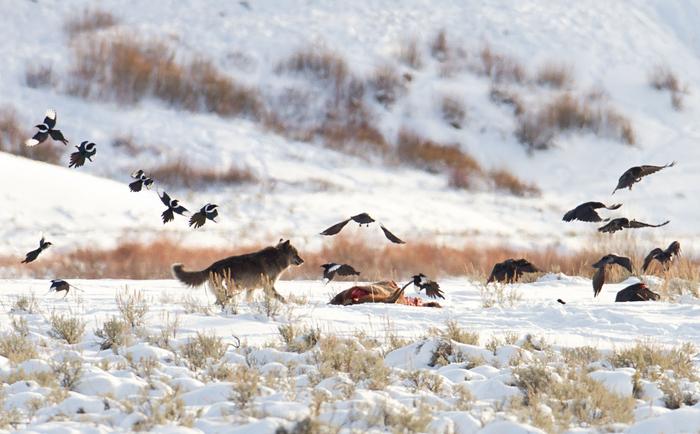The return of wolves to Yellowstone National Park has triggered one of the most dramatic ecosystem revivals ever measured, according to research published today in Global Ecology and Conservation. Stream-side willows have experienced a remarkable 1,500% increase in size over two decades, transforming barren riverbanks into lush corridors of life.
The study, spanning 20 years from 2001 to 2020, reveals how the reintroduction of wolves has reshaped Yellowstone’s northern range through what scientists call a trophic cascade – where changes at the top of the food chain ripple down through the entire ecosystem.
“Our findings emphasize the power of predators as ecosystem architects,” said William Ripple from Oregon State University, who led the research. “The restoration of wolves and other large predators has transformed parts of Yellowstone, benefiting not only willows but other woody species such as aspen, alder, and berry-producing shrubs.”
The transformation began in 1995 when wolves were reintroduced to the park after a 70-year absence. Their return changed the behavior of elk, which had previously browsed riverside willows with impunity. As elk became more cautious and their numbers decreased, willows found room to grow.
Using advanced modeling techniques, researchers measured willow crown volume – the three-dimensional space occupied by each plant’s branches and leaves. This comprehensive measurement revealed that willows grew from an average of 0.3 cubic meters in 2001 to 4.8 cubic meters by 2020.
The strength of this recovery surpassed 82% of similar ecosystem changes documented worldwide, placing Yellowstone’s transformation among the most significant examples of ecosystem restoration ever measured.
“Our analysis of a long-term data set simply confirmed that ecosystem recovery takes time,” said Dr. Robert Beschta, an emeritus professor at Oregon State University. “These improving conditions have created vital habitats for birds and other species, while also enhancing other stream-side conditions.”
The study’s findings carry implications far beyond Yellowstone. While riparian areas – the zones along rivers and streams – make up only a small portion of the western landscape, they provide crucial habitat for more wildlife species than any other ecosystem type.
However, the recovery hasn’t been uniform across all sites, highlighting the complexity of ecosystem restoration. The researchers note that some areas show varying degrees of improvement, influenced by factors such as stream channel changes and the long-term absence of beavers, another key species in maintaining healthy wetland habitats.
The research underscores a growing understanding among ecologists: predators play a vital role in maintaining healthy ecosystems. As communities worldwide grapple with questions of wildlife management and ecosystem restoration, Yellowstone’s example offers compelling evidence of nature’s capacity for self-renewal when key species are restored.
Looking ahead, researchers plan to continue monitoring these changes, recognizing that ecosystem recovery is an ongoing process that may take decades to fully unfold. The study serves as a testament to nature’s resilience and the far-reaching effects of restoring natural balances in our wild spaces.
If our reporting has informed or inspired you, please consider making a donation. Every contribution, no matter the size, empowers us to continue delivering accurate, engaging, and trustworthy science and medical news. Independent journalism requires time, effort, and resources—your support ensures we can keep uncovering the stories that matter most to you.
Join us in making knowledge accessible and impactful. Thank you for standing with us!

